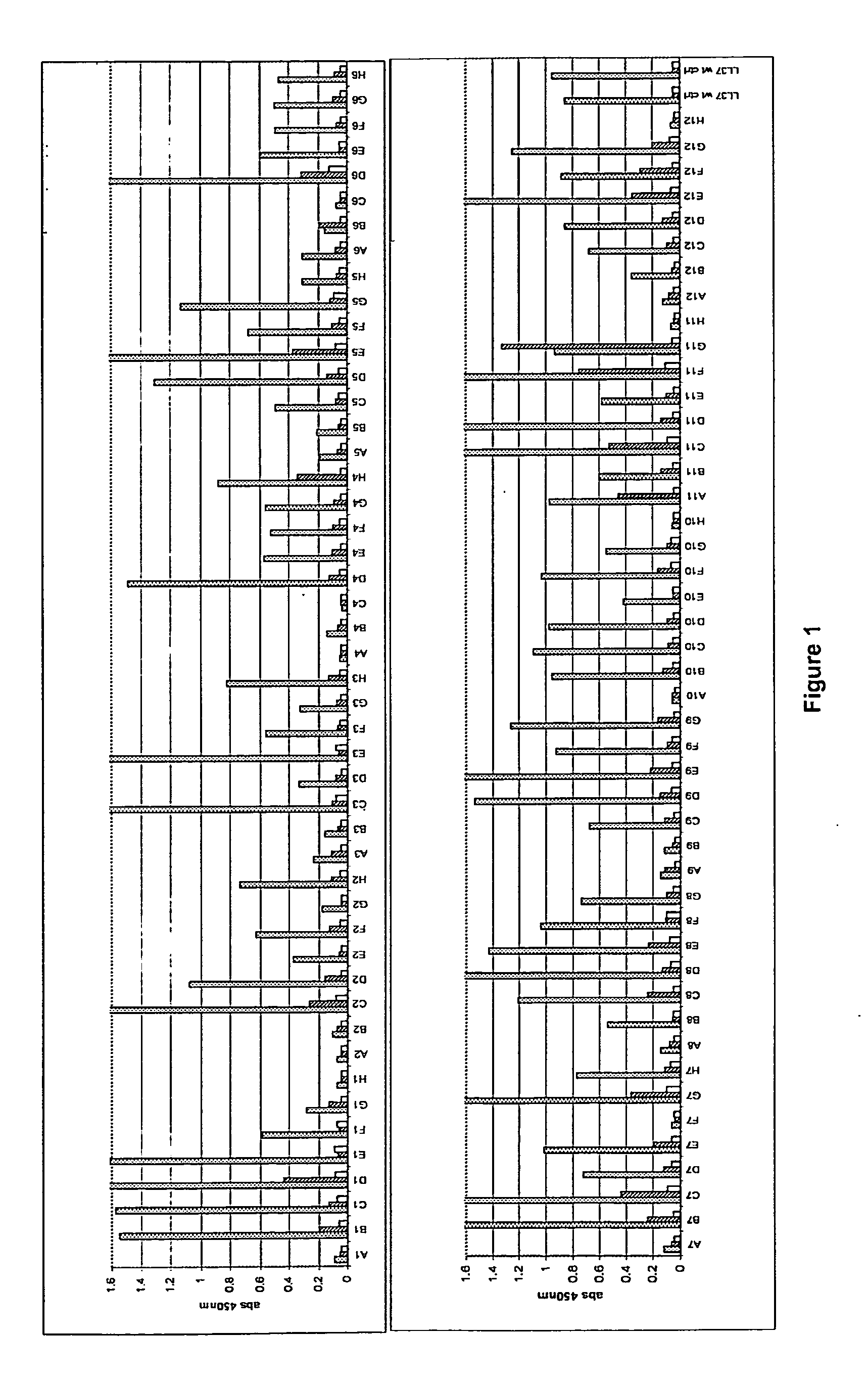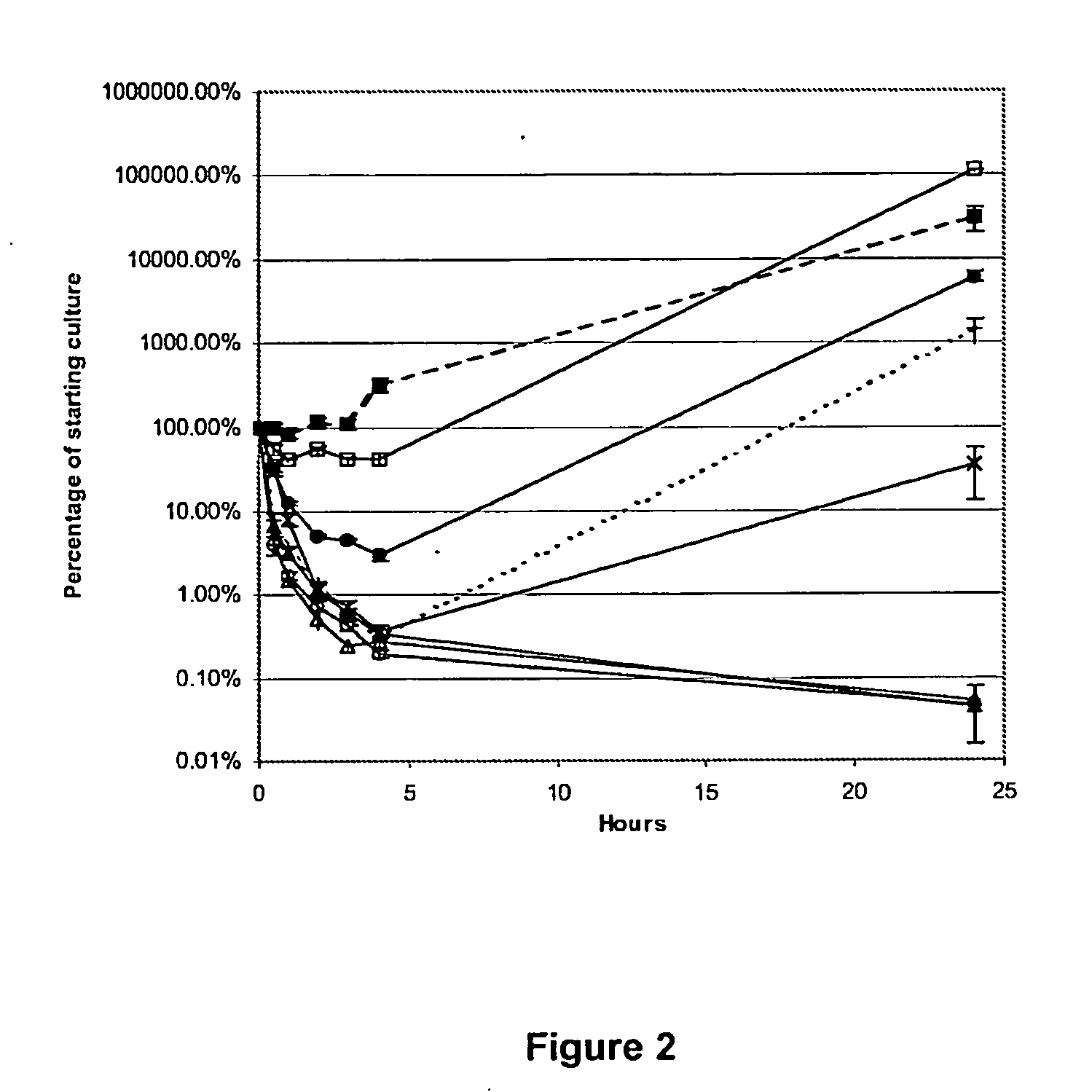Antimicrobial peptides
a technology of antibacterial peptides and peptides, which is applied in the direction of antibacterial agents, peptide sources, peptide/protein ingredients, etc., can solve the problems of no mutated peptides, no peptides, and significant limits of its use as a therapeutic
- Summary
- Abstract
- Description
- Claims
- Application Information
AI Technical Summary
Benefits of technology
Problems solved by technology
Method used
Image
Examples
example 1
a. Library Construction
[0105]In vitro (Cis-display) library construction was carried out generally as described by Odegrip et al. (2004, Proc. Natl. Acad. Sci. USA, 101 2806-2810). All enzymes were purchased from New England Biolabs (NEB Ltd., Hitchin, UK). All PCRs contained 12.5 μmol of each primer, 1 unit of Phusion DNA polymerase, 250 μM dNTP (NEB Ltd., Hitchin, UK) and 1× polymerase buffer. PCRs were carried out on a Techne Techgene PCR machine (Fisher Scientific, Loughborough, UK) for one cycle of 2 min at 95° C., followed by 20 to 30 cycles at 95° C., 15 sec; 60° C., 30 sec; 72° C., 30 sec, followed by an extension of 5 min at 72° C.
[0106]Library templates were derived from a codon-optimised reverse translation of the wild-type LL-37 sequence (Uniprot accession number: P49913). Two library constructs were designed using either doped or randomised sequences.[0107]1. Doped full-length LL-37 sequence: LL-37 was doped at a ratio of 15% per base in the coding sequence.[0108]2. Dop...
PUM
| Property | Measurement | Unit |
|---|---|---|
| Fraction | aaaaa | aaaaa |
| Composition | aaaaa | aaaaa |
| Electric charge | aaaaa | aaaaa |
Abstract
Description
Claims
Application Information
 Login to View More
Login to View More - R&D
- Intellectual Property
- Life Sciences
- Materials
- Tech Scout
- Unparalleled Data Quality
- Higher Quality Content
- 60% Fewer Hallucinations
Browse by: Latest US Patents, China's latest patents, Technical Efficacy Thesaurus, Application Domain, Technology Topic, Popular Technical Reports.
© 2025 PatSnap. All rights reserved.Legal|Privacy policy|Modern Slavery Act Transparency Statement|Sitemap|About US| Contact US: help@patsnap.com



